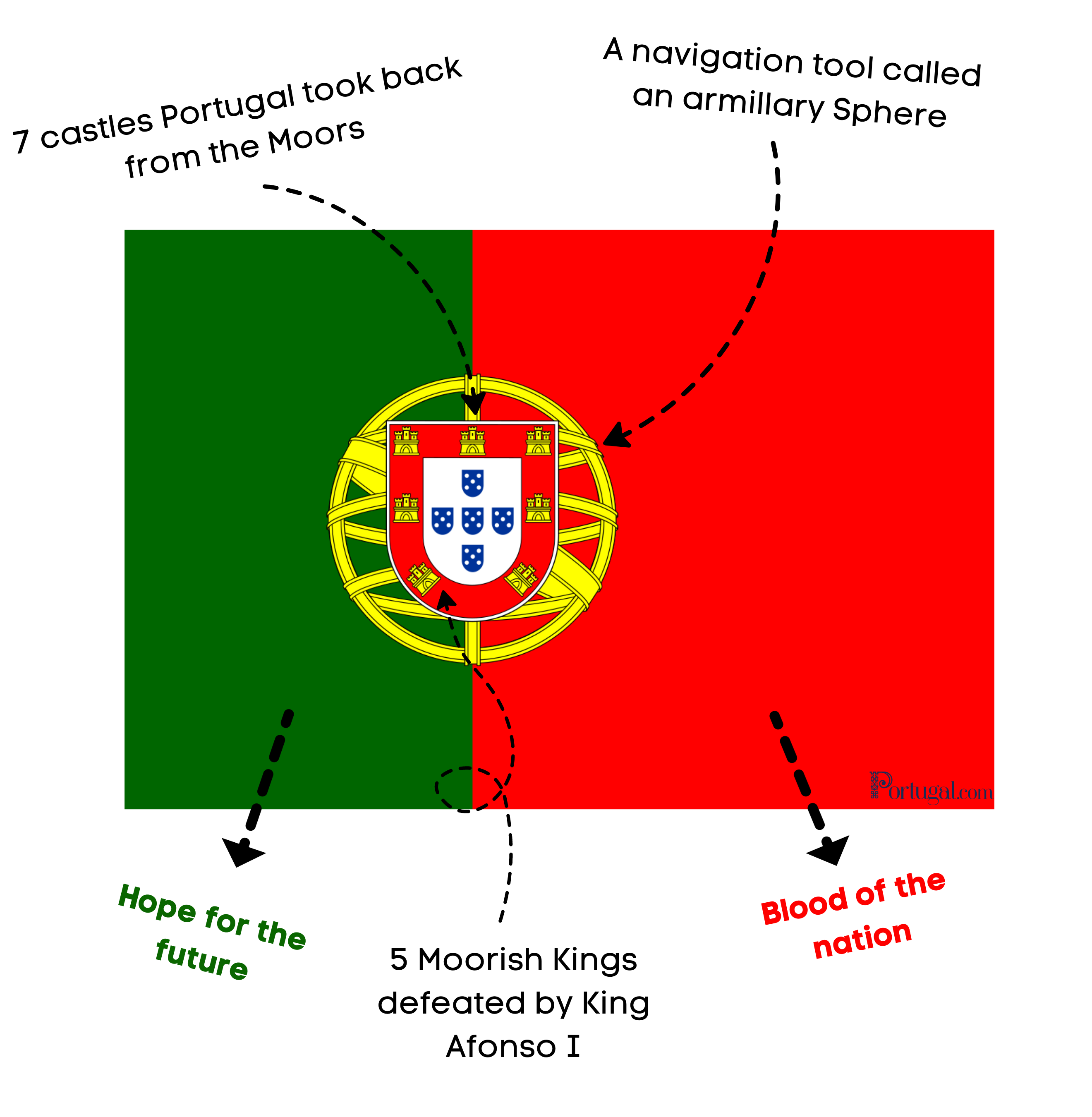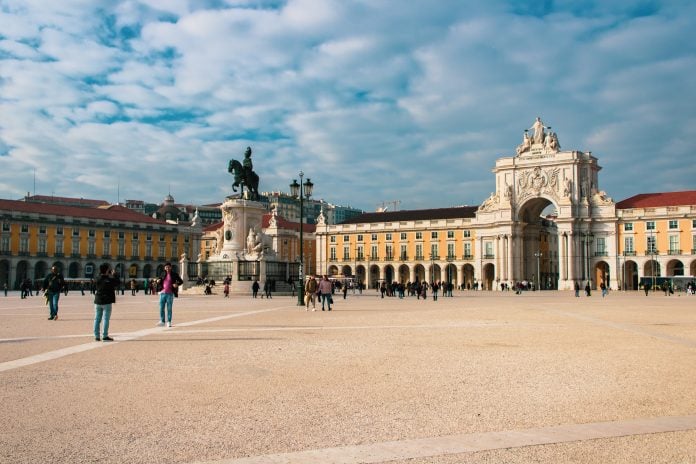The Portuguese revolution of 5 October 1910 was the first revolution in Portugal in the 20th century. It abolished the Portuguese monarchy and replaced it with the First Portuguese Republic. This day is now celebrated every year as a public holiday, known as the day of the Implantacao da Republica to celebrate the end of the monarchy and the new republic.
How did Portugal’s 1910 revolution come about? By 1910, the monarchy’s power was dwindling. The people wanted the kingdom to adapt to modern times, and the monarchy was no longer seen as a symbol of hope. The Republican Party was gaining popularity, presenting itself as having the ability to improve Portugal, and proved successful in the 1910 revolution.
Here are 9 facts about the Portuguese revolution of 5 October 1910.
The Portuguese Revolution of 5 October 1910
1. The aftermath of the revolution brought about the new Portuguese flag
After the Portuguese Revolution of 5 October 1910, a provisional government was created by the Portuguese Republican Party.
This government took important steps to abolish the remnants of the monarchy: pardoned those prosecuted for crimes against the state or religion, adopted secularization, legalized divorce, labor rights, and more.
However, a symbolic change was also made to national systems, including the flag. The flag was created by a special team including painter Columbano Bordalo Pinheiro and writer Abel Botelho.
The flag as we know it is divided vertically into two main colors, green and red. The green part is smaller. On the flag’s center, you will find a yellow armillary sphere and a red shield.
But these colors and symbols weren’t chosen randomly or for aesthetic purposes. They were selected due to their historical significance, as seen in the illustration below.

Meaning of the Portuguese Flag
2. Portugal’s monarchy lasted for 771 years
Portugal’s monarchy began in 1139 and ended in 1910, lasting 771 years. The first King of Portugal was D. Afonso Henriques, who declared himself the monarch after uniting the counties of Galicia and Portu Gale, as well as reclaiming Lisbon from the Moors. Portugal was independent.
All of the monarchs after came from a single ancestor, D. Afonso Henriques. There were four main houses ruling Portugal:
- House of Burgundy (1139 – 1383): Also known as the Afonsine dynasty, the founding house of the Kingdom of Portugal.
- House of Aviz (1385 – 1580): Also known as the Joanine dynasty, this house was founded by John I of Portugal, the Grand Master of the Order of Aviz.
- House of Habsurg (1581 – 1640): Also known as the Philippine Dynasty, it began with the acclamation of Phillip II of Spain as Phillip I of Portugal.
- House of Braganza (1640 – 1910): Also known as the Brigantine Dynasty, began with John II claiming to be the rightful heir. The last King of Portugal was then King Manuel II, reigning from 1908 to 1910 only.
3. A public assassination was one of the events that led to the revolution
While the revolution only happened two years later, many argue that an assassination was one of the events that culminated in the revolution. On February 1, 1908, King Carlos I and his eldest son and heir Luis Filipe were assassinated.
This was a very public assassination, with these being killed while riding in an open carriage through the streets of Lisbon, in Lisbon’s Commerce Square.
They were shot multiple times by a group of men. Two of the attackers, Manuel Buica and Alfredo Luis da Costa were killed, while others escaped.
4. The republican party played a large role
The Republican Party was growing. Republican candidates were voted for in the government elections in 1890. These hugely disapproved of the monarchy and the King. Members of the public began supporting the party.
The Portuguese Republican Party was created in 1876 and had as its main objection to overthrowing the monarchy. There were issues within the party, with members disagreeing about the internal politics and ideology.
5. King Manuel II fleed to England after the revolution
When the republicans took over the country with the revolution, King Manuel I first tried to flee from Ericeira on the royal yacht Amelia IV to Porto. However, armed republicans arrived and were taking over Porto, so the King had to change his plans. The Royal Family then went to Gibraltar and the United Kingdom, where they were all received by King George V.
King Manuel II then lived his life in exile in Fulwell Park, Twickenham. The King tried to recreate a Portuguese environment at Fulwell Park and was very active in the local community, attending churches and becoming the godfather of many children.
6. The first constitution of the Republic was written one year later
A year after the revolution, a constitution for the First Republic was finally approved. This was the fourth constitution of Portugal but the first without a monarchy. The constitution was approved on August 21, 1911. Known as the Politician Constitution of the Portuguese Republic, it had 87 articles grouped into seven titles which included individual rights and guarantees, state power, and more.
However, this is not the constitution Portugal follows today, and there was one even before the modern one. In 1933, a second constitution was introduced by Prime Minister Antonio de Oliveira Salazar, following an authoritarian ideology under the Estado Novo.
Finally, a new constitution was established in 1976 after over four decades of the Estado Novo regime and one year after the Carnation Revolution. This is the one Portugal has today, albeit with modern amendments in 1982 and 1989. The constitution has several articles, including the republic’s status as a democracy, universal suffrage, and more.
7. Teofilo Braga led the provisional government
Teofilo Braga led the provisional government after the revolution and then later was the second elected president of the First Portuguese Republic. Braga was a Portuguese writer, playwright, and politician from the Azores who joined the Portuguese Republican Party in 1878.
Many say he was an interesting man. After losing his wife, he became a recluse and spent time in his library. As a president, he took his umbrella everywhere and was against flashy clothing and items. He used clothing that he repaired himself and did not believe in consumerism at the time.
8. It was a bloody revolution
Unlike the Carnation Revolution revolution of 1974, the revolution of 5 October 1910 was a bloody one. There were nearly two thousand armed soldiers and sailors rebelling between October 3 and 4 of 1910. From bombings and shootings, many did not sustain their injuries. However, it is not known how many people died in the uprising.
The rebels were so successful in their fighting that the monarchy’s military had to give up, declaring the fall of the monarchy on the next day at 9 am.
9. Another major revolution in Portugal occurred in the 20th century
Over six decades later, another revolution occurred, the Carnation Revolution on April 25th, 1974. However, this was a peaceful one without any blood. The revolution brought about freedom and democracy to the Portuguese, overthrowing 40 years of fascism under the Estado Novo.
The Revolution was led by a military movement, the Armed Forces Movement (MFA), made up mostly of captains (the “April Captains”) who had been to the Colonial War and opposed the regime. The revolution thus not only led to the transition to democracy as we know it today but the end of the Portuguese Colonial War in Africa.
To celebrate this day, April 25 is “Freedom Day” in Portugal and a National Holiday commemorating the Revolution and all its conquests for the Portuguese people.


